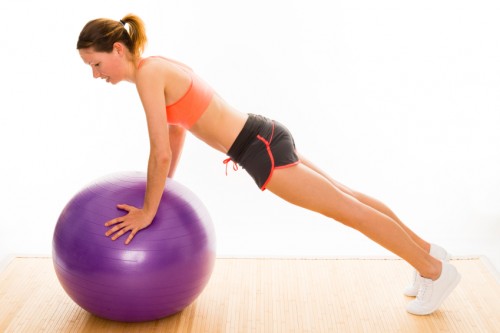
In any given motion of the body, muscles are doing one of two jobs. Either the muscle is performing the requested movement, or it is keeping that part of the body steady, so another muscle, or group of muscles, can do what needs to be done.
This is where knowing basic muscular anatomy comes in handy. Depending on how technical the counter is, the total number of muscles in the human body ranges from 640 to 850. Luckily, for exercise purposes, we only need to learn about the major motor muscles of the skeleton – about seventeen. Good sources for learning basic muscular anatomy are muscle charts, anatomy textbooks that present the skeletal muscles in their own chapter, or online reference sites. Or all three. Or any combination of the above.
What Are Stability and Mobility Exercises?
 Once we know these motor muscles and where they attach to our skeletons, we know what joints they affect. Then, based on our goal and whether those joints move or stay still during a given exercise, muscles either stabilize (keep it steady) or mobilize (move) these joints. Any skeletal muscle can act in either role, depending on what’s being asked of it.
Once we know these motor muscles and where they attach to our skeletons, we know what joints they affect. Then, based on our goal and whether those joints move or stay still during a given exercise, muscles either stabilize (keep it steady) or mobilize (move) these joints. Any skeletal muscle can act in either role, depending on what’s being asked of it.
A classic example is the “bench press.” Put into technical terms, it’s horizontal chest adduction with a free weight. The action of the chest muscles is on the upper arms and nothing else. A problem arises when we’re trying to work the chest and don’t stabilize (which is done by pulling back the shoulder blades, using the middle and lower trapezius muscles) the shoulder girdle. Another muscle, the front deltoid, wants to jump in and help, which makes the bench press far less effective as a chest exercise. With proper stabilization, though, the chest does the work and the front deltoid is removed from direct action and actually helps keep the shoulder girdle steady. The front deltoid can be worked more effectively and efficiently with a different exercise.
Why bother learning about skeletal muscles? Or about stability and mobility exercises?
- Any exercise works on muscles, which affect joints. When we learn how our skeletal muscles work what they do and don’t do, we are much better equipped for our exercise to improve our health, instead of causing injury and pain.
- Once we know our skeletal muscles, where they attach, what joints they affect, and what direction of pull they exert, it is a fairly straightforward matter to figure out an efficient and effective exercise we can do for a muscle, or muscle group. In large part, old injuries, weaknesses, or weight issues, for example, needn’t prevent us from working toward being as strong and healthy as we can manage.
- Knowing how to stabilize a joint – or our bodies, for that matter – allows us to pinpoint a muscle and work only that muscle without letting any other muscle or muscle group get in on the action.
Joint and muscle stability and mobility are huge subjects, which involve both anatomy (static info) and biomechanics (the science of body movement). Taking the time to learn at least the basics will improve exercise sessions.


